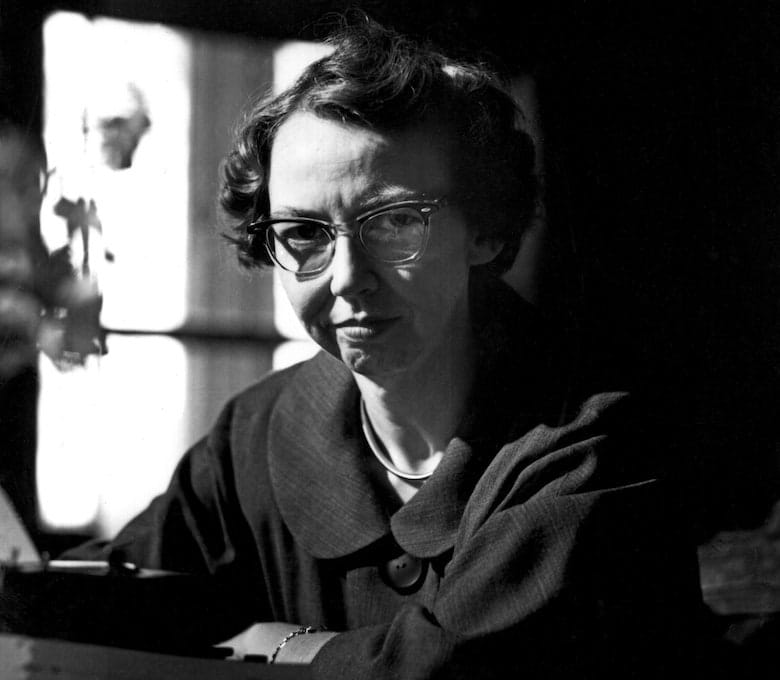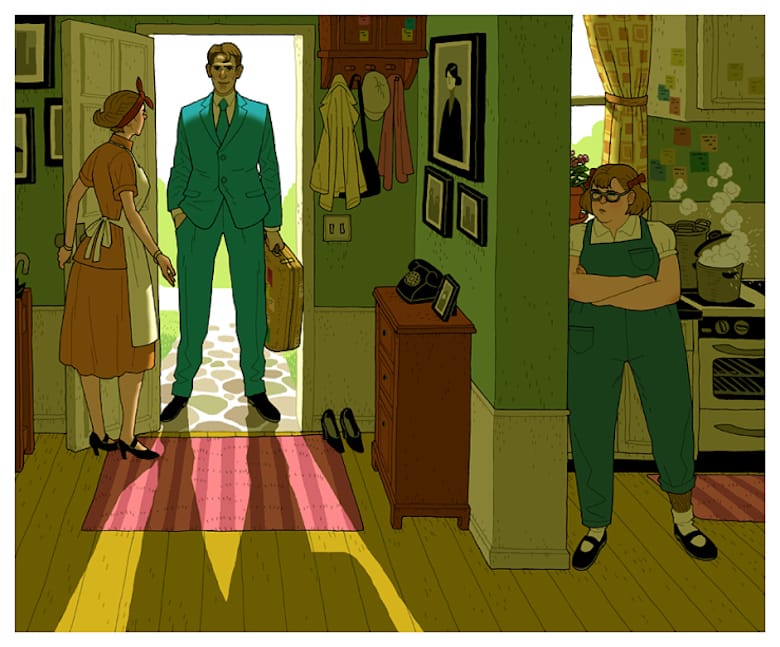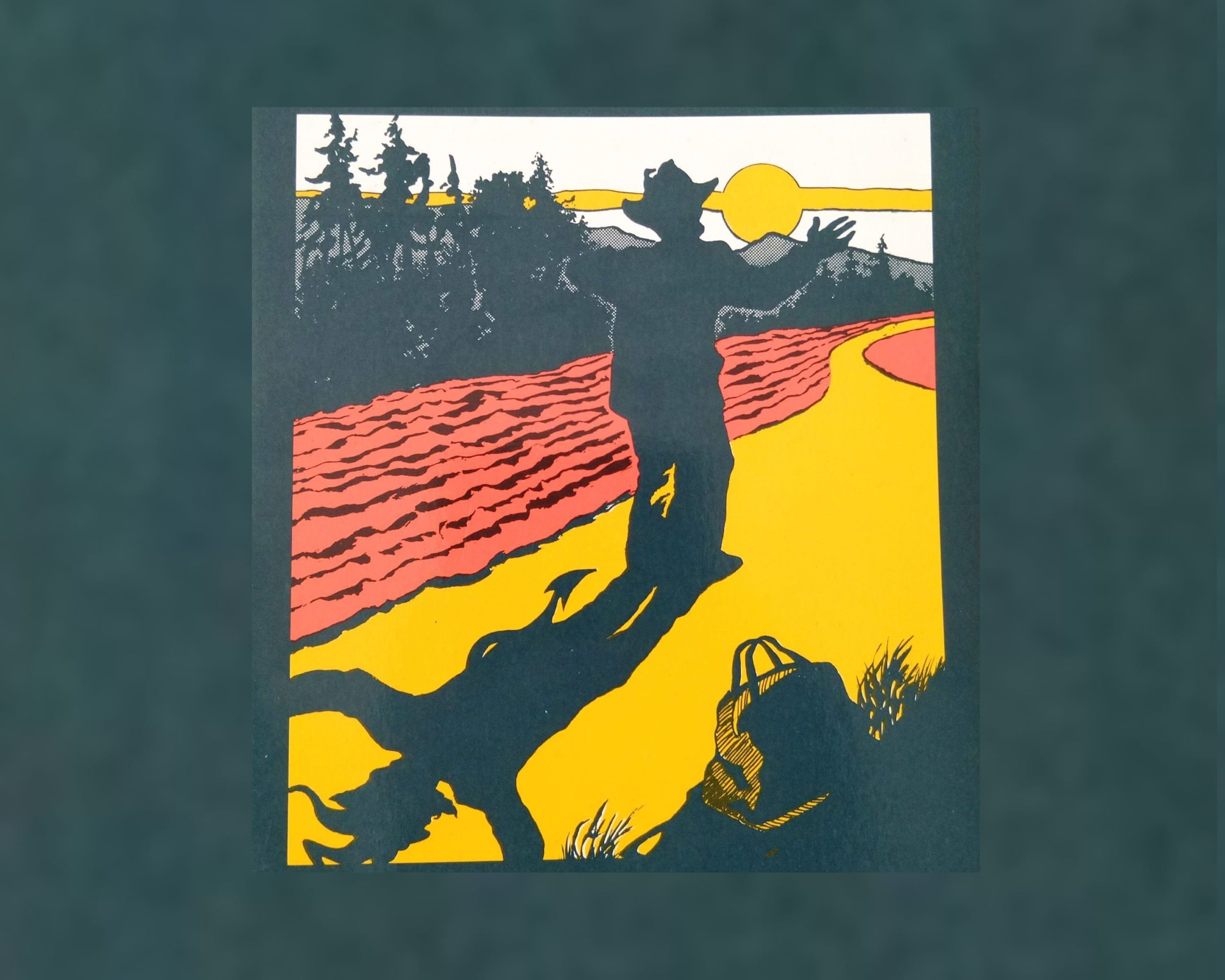I first encountered Flannery O’Connor’s stories in college. She was being taught in the context of gothic literature, a type of storytelling that has existed for centuries. It focuses on the sublime, an almost out-of-body feeling that can be brought on by being overwhelmed by both beautiful and horrible things. Her stories, all set in the American south in the middle of the 20th century, certainly do that.
But there’s something that separates O’Connor from the other gothic authors. Her mix of humor and horror is a striking one. You can almost feel her giving a deadpan laugh at humanity’s penchant for senselessness as awful scenes play out on the pages. The true depravity she invokes is deeper and more disturbing than many of her contemporaries and foremothers.

The picture of America in Flannery O’Connor’s stories is a gothic one, surely, but it is also a terrifying one. Looking at her writing from the perspective of a horror fan reveals the ways in which she shows how scary people – normal, good country people – can be scarier than any monsters.
Looking For Good Country People
“Good Country People” is one of the most famous of Flannery O’Connor’s stories, and for good reason. Every page shows off her strengths, and it functions as a microcosm of the rest of her oeuvre. She takes her wry sense of humor to religion, class, and gender in the story. Her approach to character building shows a distinct cynicism, one that verges on nihilism. There are no heroes in most of her stories, and “Good Country People” is no exception.
The bulk of the story focuses on Joy Hopewell, a 32-year-old pseudo-intellectual philosopher, and her mother, Mrs. Hopewell. Joy detests her mother (a common theme in Flannery O’Connor’s stories) and views most people as below her. Joy even changed her name to Hulga to assume a new identity that would disgust Mrs. Hopewell.
The plot begins to take shape when Manley Pointer is introduced. A Bible salesman, Pointer knocks on the Hopewell’s door and quickly establishes himself as a simple country boy to them. Mrs. Hopewell, a wealthy woman, finds his simple nature charming and pities him. Joy/Hulga has no interest in Pointer at first, but she develops a curiosity after he expresses interest in her. She then intends to seduce him, looking at the challenge as a game of sorts.

She goes off with Pointer, and the two of them go into a barn together. The Bible salesman starts to make a move on Hulga and expresses his love for her, and she refuses to reciprocate the feelings. He then reveals that he isn’t quite as simple as the Hopewells originally thought. He steals Hulga’s fake leg (she lost her real leg in a childhood accident) and stalks off, leaving her alone in the barn.
It’s a startling moment, and there are layers of irony to it. But the most intriguing aspect of this climactic scene is the way that it manages to completely transform our understanding of this one character that was first shown to us as completely flat and one-dimensional.
The O’Connor Transformation
What Flannery O’Connor is doing in the climax of “Good Country People” is invoking the idea of transformation. It’s a common theme in horror. Whether it’s the werewolf, the zombie, or the creepy hotel keeper, there are endless instances of characters transforming from friendly to terrifying in seconds. These transformations make us question whether our surroundings – the people we know, the places we go – are truly safe. That’s a fear that we all inherently have, and it lingers whenever we see a transformation scene.
But O’Connor’s take on the transformation trope is an interesting one. Rather than simply having the Bible salesman turn out to be some kind of evil swamp monster from the Georgian marshes, he’s just a man who is good at deceiving people and hiding his evil ways. He cloaks his true desires with a dumb look and speeches about religion, but he’s actually only interested in collecting perverse and strange things. Before meeting Hulga, his Bible bag was actually filled with condoms and alcohol. After meeting her, it was filled with condoms, alcohol, and a wooden leg.
The pacing of the story is important to note in the context of this transformation. The majority of the tale focuses on building up the characters of the Hopewells and Mrs. Hopewell’s friend, Mrs. Freeman. It goes slowly and monotonously until, suddenly, the tone shifts. When the story is nearly over, Pointer convinces Hulga to remove her leg, and things get frantic.
The once stoic Hulga resorts to screaming, and her face turns “almost purple” as she tries to get her leg, her control of the situation, back. On one page, Pointer is “a fine Christian,” and on the next he is telling Hulga how he has “been believing in nothing ever since [he] was born.” Not only is Pointer more depraved than Hulga, but he’s also smarter than her, more clever than her. The thing she took pride in the most – the fact that she was also intellectually a step ahead of everyone – was completely shaken in this moment.
The ending blindsides the reader, and that’s the point. O’Connor wants to show that there is evil lurking in the people we least suspect, and that’s the best way to do it. When I imagine the scene, I imagine Hulga and Pointer sitting in the darkness of the barn, and his face suddenly shifting into a grotesque, frightening, monstrous image. O’Connor doesn’t write that into the narrative, but she doesn’t need to. The terror of the transformation is implied and literal, and Pointer feels like he could be anyone the reader knows.
A Horrifying Collection of Stories
Of course, it’s not only “Good Country People” that uses this technique. The idea of normal folk actually being monsters is one that runs throughout nearly all of Flannery O’Connor’s stories. “A View of the Woods” is another great example. It follows a frustrated grandfather and his granddaughter who is a mirror image of himself. By the end of the story, his love has turned into something more violent, and he is shocked to find himself quite literally beating the child to death.
— FOUNDATIONS OF HORROR —
Further explore these subgenres & tropes. more>>
#Transformations are Transforming | #Gothic horror

There are endless instances of O’Connor transforming a character into a monster, and it always manages to be terrifying. Does it invoke a sense of the sublime? Well, yeah, but it is also just straight up scary. Her view of the South and the people in it was always a pessimistic one, but what stands out to me the most was her ability to write a transformation scene that stands up to the scenes from the best horror writers out there.
The strength of O’Connor’s writing is that it makes us reevaluate things that we normally view as mundane. She wasn’t afraid to peek behind closed doors; in fact, she relished throwing the doors open and gawking at whatever creepy thing was there. Her horrors were real, and that’s what made them so uncomfortable.
A Complete List of Flannery O’Connor Stories
“The Geranium”
“The Barber”
“Wildcat”
“The Crop”
“The Turkey”
“The Train”
“The Peeler”
“The Heart of the Park”
“A Stroke of Good Fortune”
“Enoch and the Gorilla”
“A Good Man Is Hard to Find”
“A Late Encounter with the Enemy”
“The Life You Save May Be Your Own”
“The River”
“A Circle in the Fire”
“The Displaced Person”
“A Temple of the Holy Ghost”
“The Artificial Nigger”
“Good Country People”
“You Can’t Be Any Poorer Than Dead”
“Greenleaf”
“A View of the Woods”
“The Enduring Chill”
“The Comforts of Home”
“Everything That Rises Must Converge”
“The Partridge Festival”
“The Lame Shall Enter First”
“Why Do the Heathen Rage?”
“Revelation”
“Parker’s Back”
“Judgment Day”
Last Updated on June 11, 2021.

